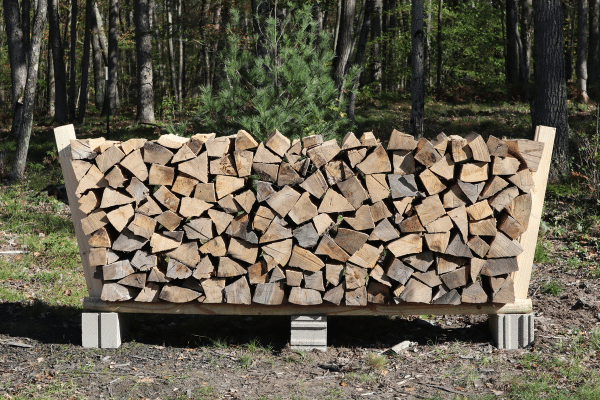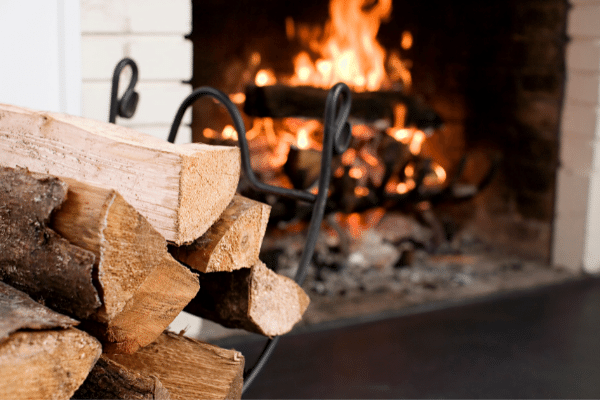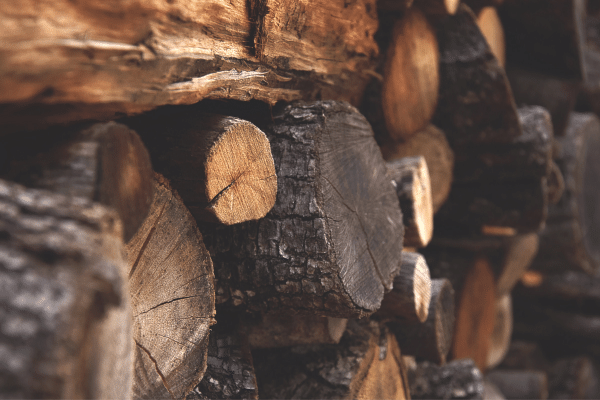- Home
- Types Of Firewood
- Best Firewood to Burn Chart
Best Firewood To Burn Chart
This post may contain affiliate links so I earn a commission.
Our best firewood to burn chart lists popular types of firewood and ranks them from best too worst based on their BTU rating.
Chances are, if you're using firewood to heat your home, you're looking to generate the maximum amount of heat possible so that your house is warm throughout the winter.
So, it only makes sense to burn a species of firewood that has the highest BTU rating, which in turn will create more heat for your home.
BTUs or British Thermal Units, are measured by the amount of energy needed to heat one pound of liquid water by one degree fahrenheit.
A species of firewood that has a higher BTU rating will supply more heat, per similar sized piece of wood, than a species with a lower BTU rating.
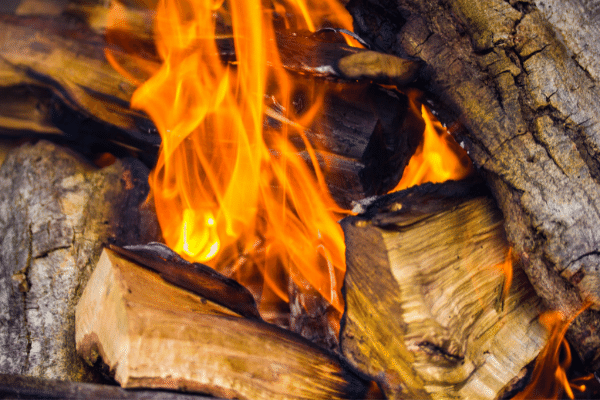
Wood density plays a very important roll in BTU rating.
Heavy, dense wood will have a higher rating than a soft, lightweight piece of wood.
To learn more, let's look at some other important factors that give you the most heat possible from a piece of firewood.
Burning Dry Firewood - How To Season Firewood Fast
No matter what species of firewood you burn, it needs to be seasoned.
Seasoned firewood is described as wood that contains a moisture level of 20 percent or less.
Wet wood, or wood that has been freshly cut from a living tree contains too much moisture to effectively burn.
Also called green firewood, wet wood will sizzle, hiss and burn at a very low temperature (if you can get the wood to burn at all).
Since wet firewood burns at a very low temperature, the leftover unburned particles adhere to the interior of your chimney in the form of creosote.
As creosote builds up, it increases the possibility of a dangerous chimney fire.
A lot of people think softwoods are the primary cause of creosote buildup, however, it's green firewood that causes creosote, not necessarily the type of firewood you're burning.
What's the best way to season firewood?
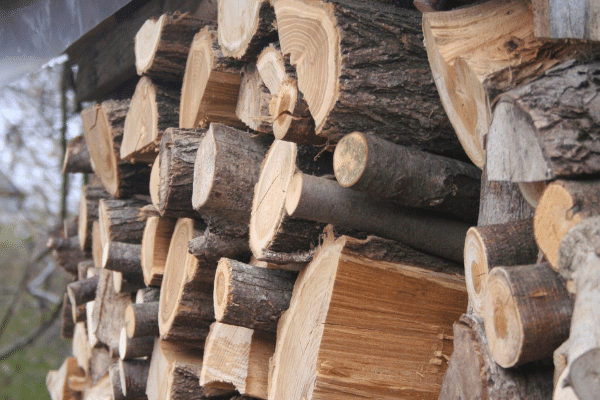
Firewood should be stacked in rows and elevated off the ground in a location that receives plenty of sunlight.
By stacking the wood in a firewood rack, on wooden pallets or on top of 2x4 runners, it allows the wind to flow under the wood and penetrate all sides of the firewood stack.
It also stops the bottom row of wood from soaking up ground moisture, along with reducing the chances of ants or mice from nesting and living inside your stack of firewood.
If you cut down a live tree in the summer will it be dry and ready to burn by winter?
Probably not.
Firewood typically takes at least 6-9 months to season, preferably 1-2 years.
So, if you cut wood early in the spring while splitting and stacking it right away, the wood will be dry enough to burn in the winter, especially if you are burning ash which contains a low overall moisture content even when green.
However, some species like red oak take around 2 years to fully season.
Common Firewood Measurements
Whether you buy your firewood or cut it yourself, it's important to know how much wood you need, or use every year.
Unfortunately, there's a lot of different terms that are thrown around when describing a measurement of firewood.
Words like face cord, rick, bush cord and even a pickup load are often used to describe a specific amount of firewood.
However, the only legal measurement of firewood is a cord.
A cord of firewood measures 128 cubic feet and can be stacked in any shape, but it's typically stacked 8' long x 4' tall x 4' deep.
The photo below shows a common cord of firewood.
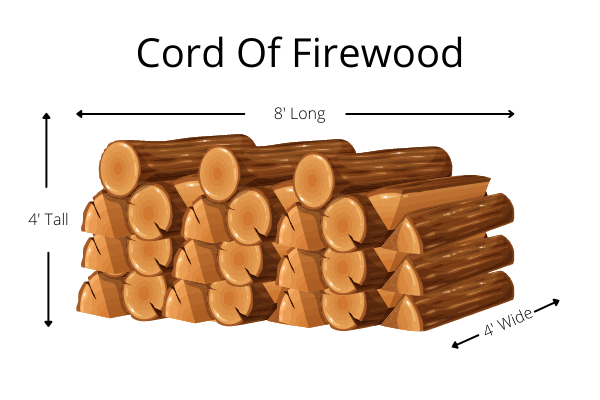
You can also purchase firewood by the half cord, which as the name implies, is half the amount of firewood found within a cord.
Totaling 64 cubic feet, a half cord of firewood can also be stacked in any dimension, but a stack that's 4' long x 4' tall x 4' deep is the most common.
The photo below shows a half cord of firewood.
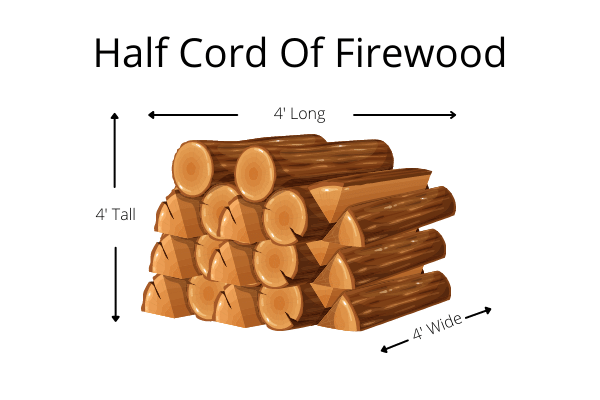
Best Firewood To Burn Chart
Now that we've determined that dry firewood is ultimately the best firewood, regardless of species, our best firewood to burn chart below lists popular firewood species from best to worst.
The best firewood to burn chart is also divided up into hardwoods and softwoods.
Depending on where you live, hardwoods like ash, oak, maple or beech might not be an option.
For example, the western portion of the United States and Canada are dominated by softwoods like fir and pine.
Does this mean these softwoods are inferior to all hardwood species?
No, not at all.
In fact, there are a lot of "hardwoods" that are actually softer than "softwoods."
So, don't let the name fool you when it comes to deciding the best firewood to burn.
Take a look at the best firewood to burn chart below to see where your firewood stacks up against other species.

Best Firewood To Burn Chart - Overall
Although the information contained in our best firewood to burn chart is important, you don't always have to burn a species of firewood that creates the most heat.
In fact, mixing a lesser grade of firewood with a top quality firewood choice is always a good idea.
Typically, lightweight woods are great for kindling because they start easily and burn hot, while more dense woods are better for coaling and an overnight burn.
So, carefully look over the best firewood to burn chart above and you'll be able to create the perfect campfire, or easily heat your home throughout the coldest winter nights.
